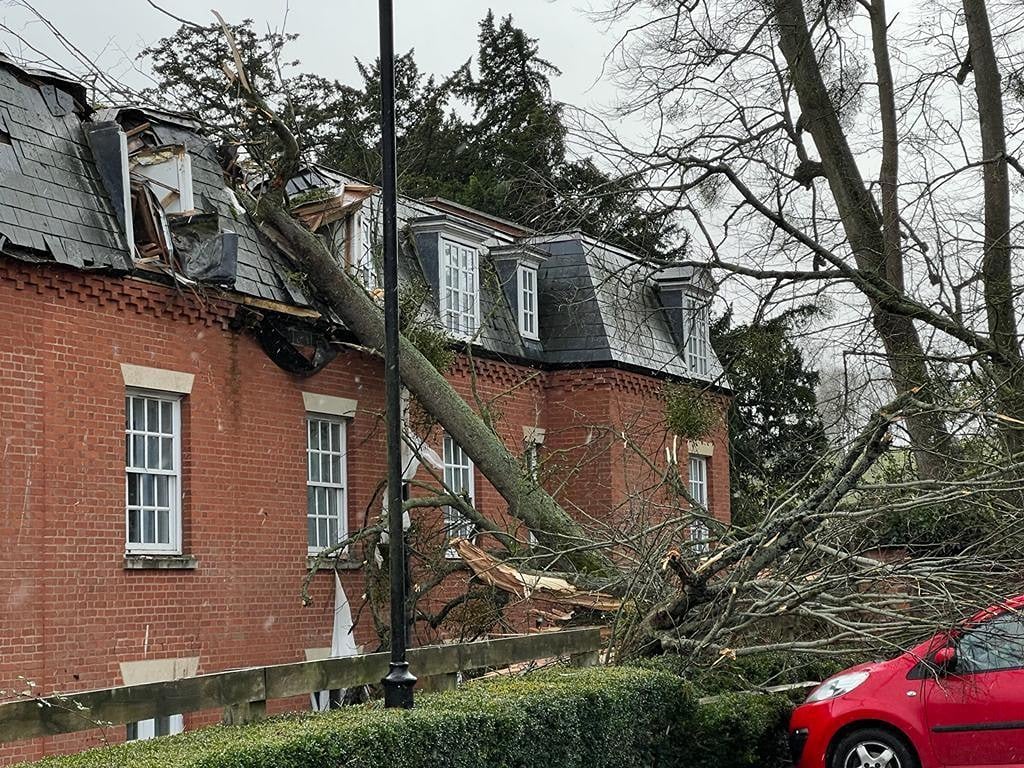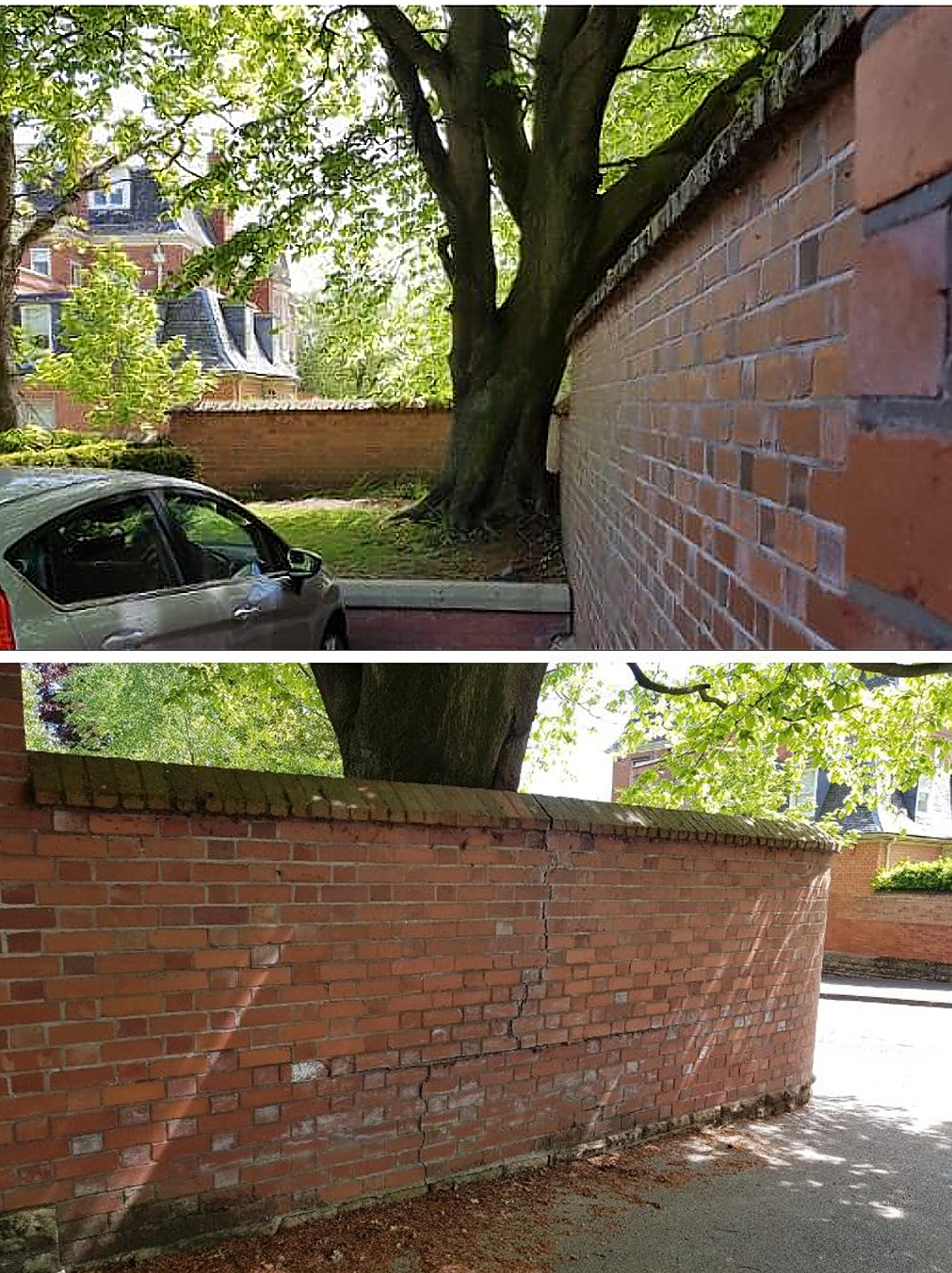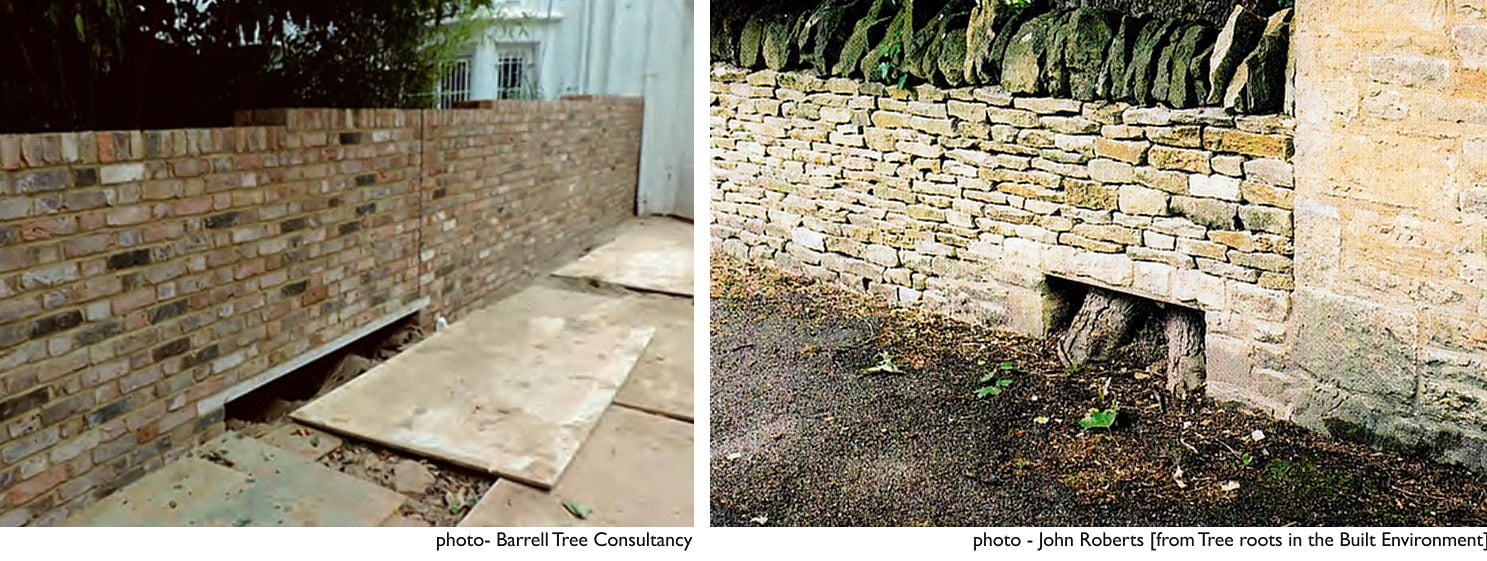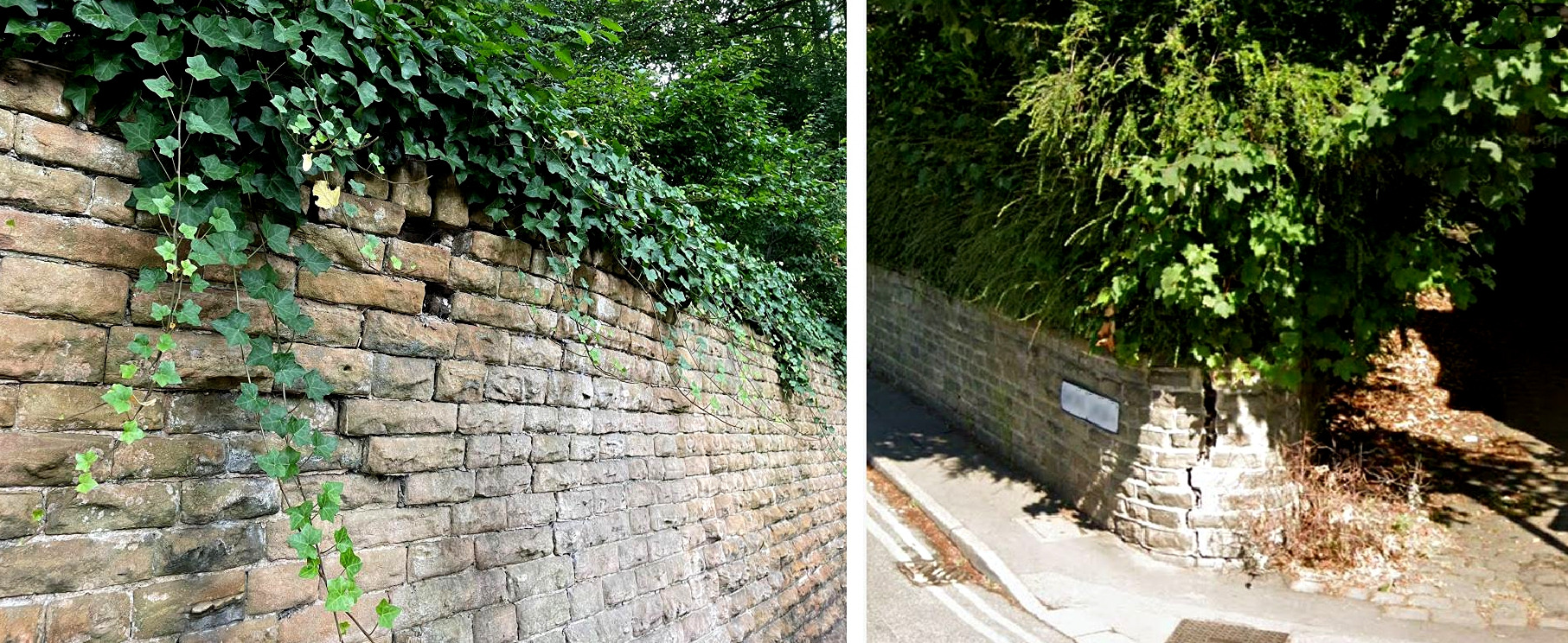Direct damage: Tree Failures & Tree growth
Tree Failures

Every once in a while, especially after stormy weather, photographs appear in.the press showing houses with branches or whole trees resting on their roofs.
Yet such instances are rare. There are about 85,000 households in Herefordshire and many thousands of them have trees growing in their vicinity and in the vast majority of instances, trees and houses coexist without incident. It is the very rarity of cases where damage has arisen that gives rise to the presence of the report in the paper, a reflection less of the dangers posed by trees and more of the journalistic maxim that the only ‘good’ news is bad news! The reality is that the risks posed to houses by trees is small: most trees don’t fall over and fewer still fall onto buildings.
Nevertheless, although significant structural damage being caused to buildings as a result of tree failures is rare, it is nevertheless true that in some circumstances, trees can harm structures. It is therefore important that house owners and property managers are aware of what the risk are, so that appropriate and proportionate action can be taken where necessary to manage the situation in a balanced and rational manner.
The process of assessing the level of risk posed by a tree is discussed HERE, in the article Trees: Rights, Rights & Responsibilities, in which includes sections on What is a ‘Dangerous’ Tree as well as some consideration of risks posed by Leaning Trees. See below for discussions on damage to buildings resulting from the growth of tree roots, how roots may affect drainage systems and how they may affect free-standing and retaining walls.
Direct damage caused by Growing Tree Roots
As well as damage resulting from the failure of trees and branches, the simple growth of trees, including their roots, can also cause problems. Roots increase in size and extent as the tree grows and in doing so they must necessarily push aside the soil they are growing in. This involves the growing root exerting some force on the surrounding substrate, a force generated through the processes of cell division and expansion. The forces involved are quite significant, but there is a physiological upper limit to the amount of pressure that they can exert and while these may be sufficient to displace or distort lightweight structures, tree roots growing under the foundations of substantial buildings such as houses and solidly built garages are not capable of causing them to be lifted. Neither can they displace substantial solid obstructions: when they come into contact with such structures they will divert to grow alongside or around them or else they will simply stop growing.
On the other hand, actively growing roots are quite capable of creating forces that are able of lifting less substantial structures, such as sheds and low, free-standing walls, as well as distorting tarmac surfaces and causing paving slabs to be lifted. In some such cases, for instance where surface treatments have become distorted by some roots from a well-established tree, it may prove acceptable to lift the distorted surface, carefully prune any protruding roots and finish with a more flexible surface such as gravel. However it is recommended that an arboriculturist be consulted to ensure that the pruning of roots is done correctly and is not so extensive as to compromise the tree in question.
Tree Roots & Drains
Tree roots are occasionally implicated in damage to underground drainage systems and it is the case that they are capable of displacing drainage pipes to result in leaks. When such leaks are present, roots will tend to grow preferentially in the moist environment. If they then penetrate the fault and proliferate, blockages can occur. These problems are usually associated with old, clay drainange pipes: well-assembled modern systems with flexible, sealed joints rarely leak sufficiently to stimulate root growth, so such problems are therefore uncommon on recently installed drainage systems.
It should be noted that whenever such problems occur, they should be addressed through repair of the drains rather than by removal of trees. The latter course will only provides temporary relief as the roots of other plants will quickly detect the moisture arising from the leak and they will in turn grow preferentially, eventually replacing those of the removed tree to cause further blockages.
Trees & Free-standing Walls
While the forces developed by the growing tree are insufficient to directly lift heavily loaded structures, much less force is required to displace such structures sideways. Thus even well-built free-standing walls can be distorted as a result of direct pressure from the expanding trunk or branches of a nearby tree leading to bulges and eventually to cracks developing.
Furthermore, while growing roots may be unable to lift a wall, their growth and that of root buttresses acting at the base of a wall can develop sufficient pressure as to cause it to develop a lean, which may become progressively more pronounced over a number of years.
In some circumstances it may be possible to resolve the issue without removing the tree by carefully dismantling a section of wall, installing a load-bearing lintel above the level of the roots and rebuilding the wall on the lintel.
This technique can also be used to bridge existing roots when constructing a new wall, as shown in the photographs below..


Photo: Barrell Tree Consultancy Photo: John Roberts (From Tree roots in the Built Environment)
Retaining walls can be especially vulnerable, as a tree growing nearby on the higher level (i.e. on the land that is being retained) faces rather little opposition to pressures created by its continuing growth. As a result they can be distorted and even pushed over with relative ease which, in the case of a large retaining wall (such as the one on the left below) could have serious consequences.
On the right, trees and shrubs growing partially surrounded by a low retaining wall have led to its fracture.

